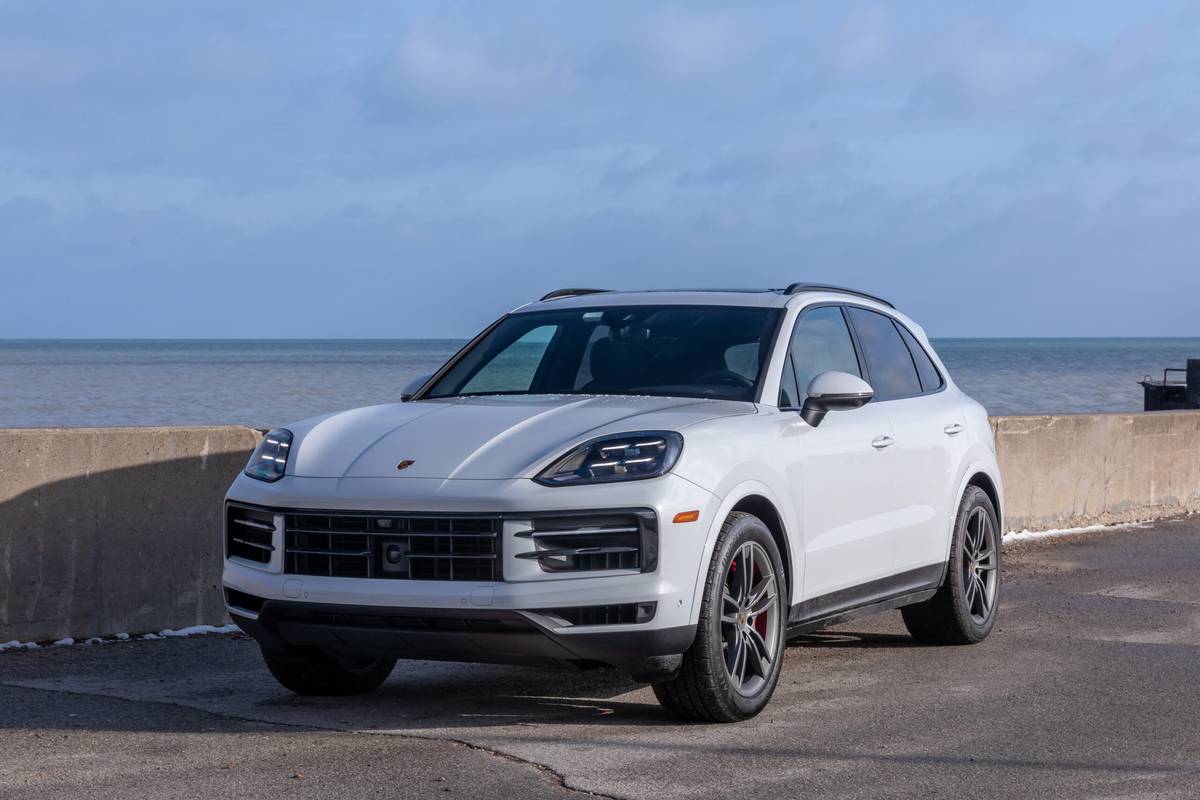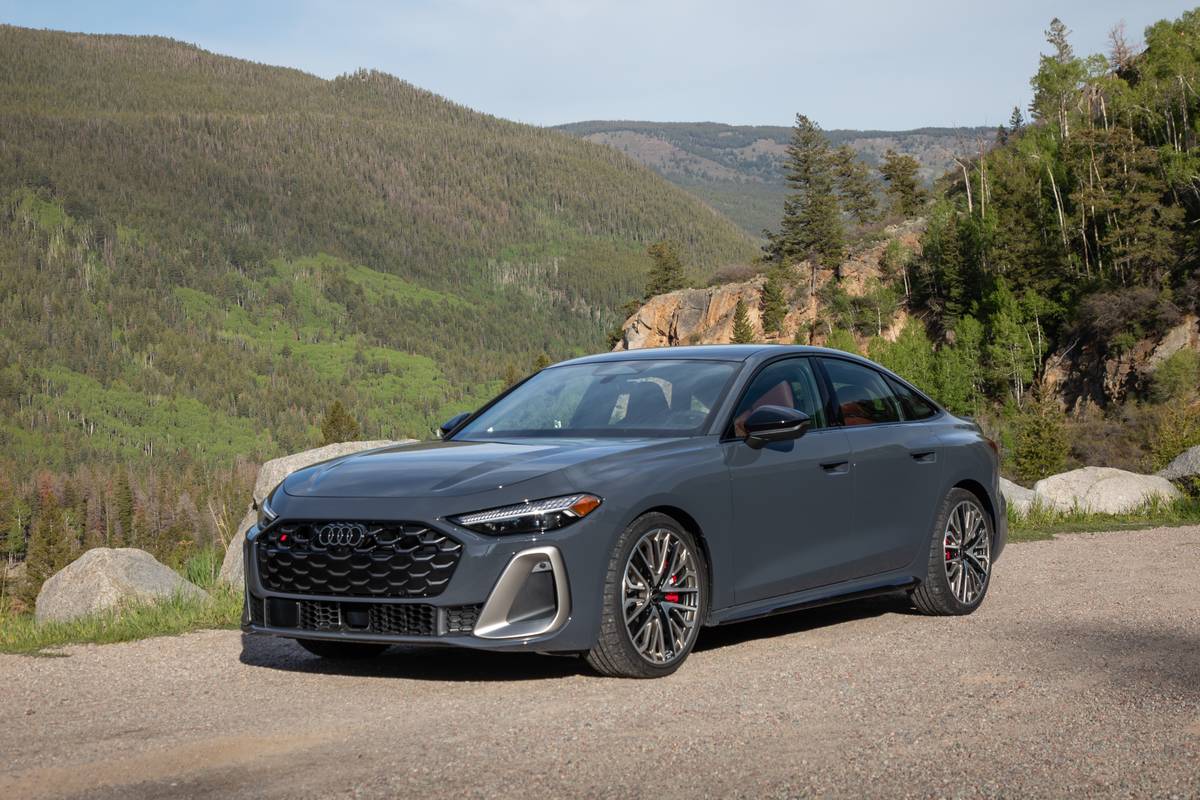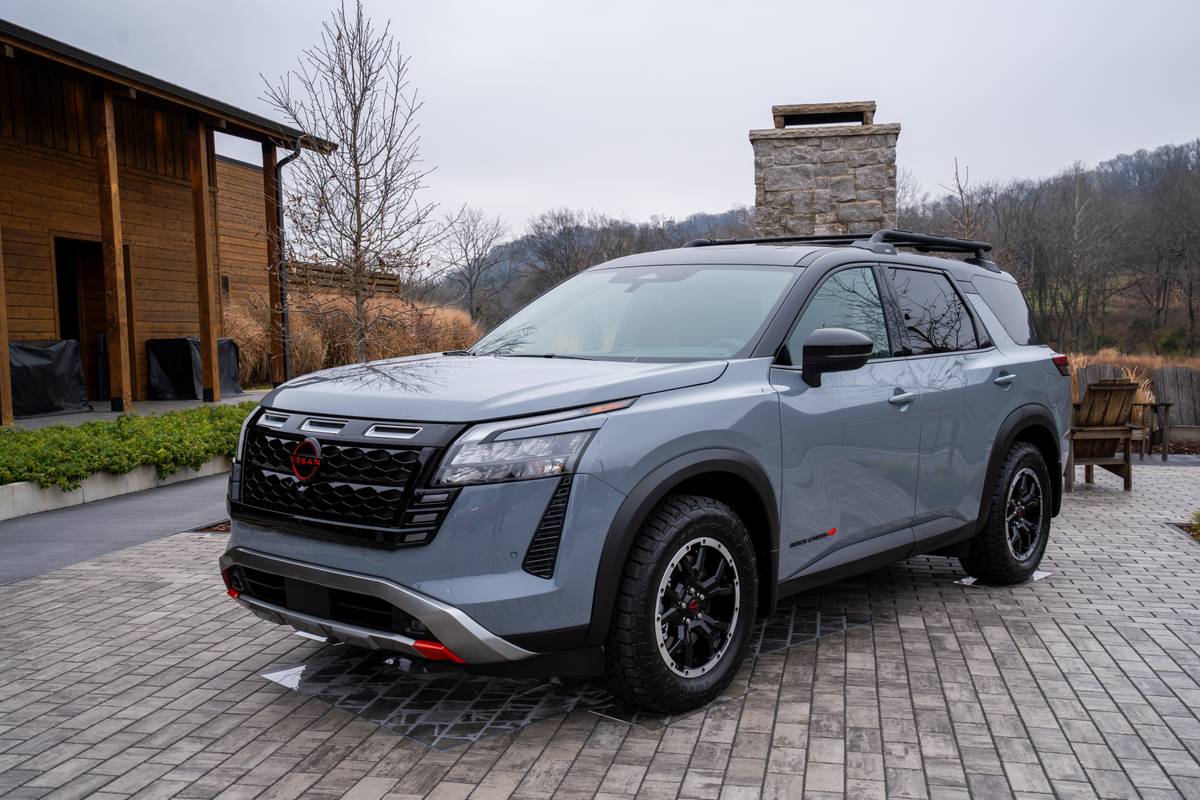Boston.com's view
There was a time when a sensible ride in a sturdy Volvo inevitably seemed to feature a front-seat occupant in a tweed jacket with elbow patches and one with a peasant blouse and turquoise and silver earrings.
Put that same pair in today’s test Volvo, the XC90, and send them out on a windows-down ramble and you’d have suede elbows threatening to tear free and silver and turquoise clanking like wind chimes in the gust. They’d be aboard the first V-8 manufactured by Volvo, the hot rod version of its hot-selling, super-safe SUV.
Hot rod and Volvo are not words often uttered in the same breath. But that is what this car is — even as it maintains the same solidity, tightly appointed interior, and utility (six of seven seats fold flat for cargo) that was a hallmark of the original XC90.
Volvo got into SUVs, like so many other companies (Porsche, Mercedes-Benz, Honda) because it had to. Market share demanded it. Now, Volvo has gotten into V-8s because it had to.
As Toyota learned before it brought forth the Tundra pickup truck, you cannot sell a truck or an SUV in the land of ”We don’t care about no stinkin’ gas prices” without offering a V-8 as a people-hauling, cargo-carrying, trailer-tugging option. The challenge for Volvo was to put the V-8 into the same carefully crafted body (with collision protection in mind) that holds the lesser inline five- and six-cylinder engines.
Few can match Japanese motorcycle manufacturers for getting engine whomp out of small packages. So Volvo turned to Yamaha. The result is a 311 horsepower, aluminum V-8 that sits transversely (as opposed to front and rear) and thus saves space. And, because of that sideways positioning, it is less likely to intrude on the passenger cabin in a crash.
While the lesser XC90s get a five-speed automatic transmission, the V-8 comes with a six-speed automatic with manual control and a winter option for surer gearing and footing.
The combination of transmission and engine (325 ft.-lb. of torque and a 5,000-pound towing capacity) puts it squarely on par with Volkswagen’s Touareg V-8, the Mercedes-Benz ML500, and BMW’s X5 4.4i And it’s cheaper (by the thousands in some cases) and clean: It has an Ultra Low Emissions engine.
It is a very smooth and quiet car, stable at all times. It is sneaky fast; a couple of times I glanced down to find myself going far faster than I would have guessed. Cabin noise is minimal, though I wouldn’t mind a little exhaust burble in a Swedish hot rod.
The front seats are broad and firm, middle seats split 40/20/40 and include at the middle a nifty slide-forward section to which you can attach a baby seat, and pull the kid up close to you between the fronts seats, yet shield him from the air bags. The rear seats hold a couple of smaller folks but would not be comfortable for adults on long rides.
As befits a car that starts at more than $45,000, standard features abound: power moonroof, an in-dash 6-CD changer with amplifier and eight speakers; leather seating, driver and front passenger eight-way adjustable seats; dual-zone climate controls.
You can run the base price up rather quickly by adding metallic paint ($475), heated front seats and headlamp washers ($625), and a package that includes 18-inch alloy wheels, upgraded sound, wood inlays, wood steering wheel, and leather shift knob ($1,795). Another package includes park assist, rear cargo net, and power retracting mirrors ($1,300).
When you talk about standard equipment on a Volvo, you have to mention safety gear. This one includes a high-strength steel passenger cage, boron steel roof supports, inflatable curtain head protection for all three rows, side-impact front air bags, ABS, electronic braking assistance, dynamic stability traction control, and the vaunted XC90 roll stability control.
Latest news



